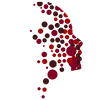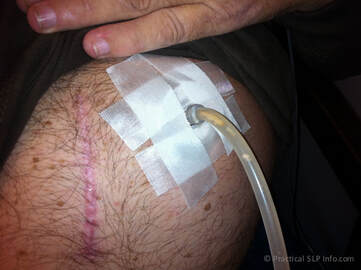Pain at the tube site
Pain at the tube site may be caused by a variety of reasons. The most common of these is tissue irritation by stomach acid that has seeped from the stomach into the tube tract. This can often be helped by medication but it is important your doctor assess the exact cause of the irritation and pain before treating. If you notice increased pain, irritation, bleeding or pus at the tube site, it is important to be evaluated by your physician.
Broken end Tips
There are no replacement parts for gastrostomy tubes. If an end cap is missing, a foam earplug can very effectively be substitutes to seal the tube ends. These can be purchased at any pharmacy very inexpensively. These should only be used as temporary plugs until you are able to see your physician and have the g-tube replaced. They will, however, spare the frustration of a leaking g-tube until replacement is possible.
Clogged or Slow Passage
It is very common for food material residue to build up along the wall of the gastrostomy tube. If this build-up becomes significant, it can dramatically slow the passage of material through the tube and potentially cause it to clog. Flushing the tube regularly with water can help. Coca-Cola has also been found to be highly effective in dissolving this residue but is more effective on smaller amounts of residue. Waiting until the residue becomes significant may mean it is very difficult, if not impossible to effectively clear the tube.
In the event a clog occurs and it is impossible to pass any material through the tube, it is important you seek medical attention quickly, especially if you have not been cleared to take anything by mouth and the g-tube is the only way of taking medications and nutrition. There are a couple strategies you can try to clear the g-tube clog yourself. However, if these do not work, the tube will need to be replaced immediately.
First, attach a large syringe (same used for feeding) to the tube as if you were going to feed. The syringe should be plunger down so the syringe is in position to suction. Draw the plunger back quickly, taking care not to pull on the g-tube itself. This should create a strong suction within the tube. Repeat this until you notice material drawing into the tube from the stomach. If this happens, you have likely cleared the clog.
If you are unable to clear the clog after several attempts, it is important to seek immediate medical attention to have the tube replaced.


